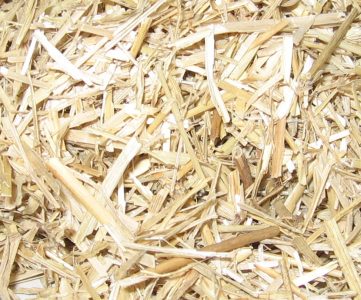Lignocellulose appears to hold potential benefits on bird health when included in poultry diets. In recent years, there has been a growing amount of scientific reports suggesting that dietary fiber can have a positive effect on animal health and productivity.
| Several studies showed that due to their unique physicochemical properties, different sources of insoluble fiber can affect the development and function of the digestive tract, resulting in improved chicken health and growth (Kheravii et al., 2018). |
Chemical composition and physicochemical properties of fiber
Dietary fiber comprises an important part of plant foods and is chemically defined as the sum of non-starch polysaccharides (NSP) and lignin (Theander et al. , 1994). Sources of fiber with high levels of insoluble NSP are, for example, oat peels, sunflower husks or wheat bran, while sugar beet pulp or apple pomace contain higher concentrations of soluble NSP.
From a physiological point of view, dietary fiber comprises any polysaccharide and lignin that is not degraded by endogenous enzymes within the digestive tract and as a result reaches the hind gut.
Lignocellulose (LC) is a component of plant cell walls and is mainly composed of the carbohydrate polymers cellulose and hemicelluloses, as well as the phenolic polymer lignin. The proportional composition depends on the type of lignocellulosic biomass used.
With regard to physicochemical properties, there is a positive correlation between soluble fiber content in the diet and digest viscosity in monogastric animals.
- Due to the low proportion of soluble fibers such as pectins, sources of insoluble dietary fiber have little effect on digest viscosity. [Register]
Few studies showed that sources of insoluble fiber, such as cellulose or wood shavings, could have a positive impact on the growth performance of broilers. It was suggested that a combination of improved bowel function and improved nutrient digestibility was responsible for the observed beneficial effects (Amerah et al. , 2009; Shakouri et al. , 2006). Regarding dietary LC and lower inclusion levels, it was also hypothesized that digestive physiology and nutrient digestibility could be modified, leading to improved growth performance (Makivik et al., 2019).
Chickens usually have the ability to meet their metabolic energy needs to some extent by increasing or decreasing feed consumption.
- Chickens that received diets diluted with oat shells by up to 20% showed higher feed consumption resulting in similar energy intake and average daily gain compared to those that received an undiluted control diet (Van Krimpen et al., 2009).
When higher levels of dietary inclusion of powdered Lignocellulose (LC) were used, this regulatory mechanism appears to be partially restricted, which could be attributed to the physical form of LC fine fibers and their physical volume effect (Röhe et al., 2019).
Conclusions
Several studies were conducted in order to evaluate the effect of the Lignocellulose (LC) diet as a source of insoluble fiber on poultry nutrition. Data on the impact of LC on growth performance, nutrient digestibility, digestive tract development and gut microbiota in chickens are inconsistent which does not allow to draw clear conclusions on the subject.
- One of the reasons for this is that a direct comparison of the obtained results is difficult as studies differed in various aspects like: feed formulation, LC inclusion levels, and LC products used.
For future research, more attention should be given to the type of food formulation that is used. This will allow to distinguish the effects of dietary fiber from those of foods and nutrient composition. In addition, the action mechanism of LC within the digestive tract should be examined more closely. Focusing on its chemical and physicochemical properties.♦
Source: Ilen Röhe yJürgen Zentek
[/Register]
